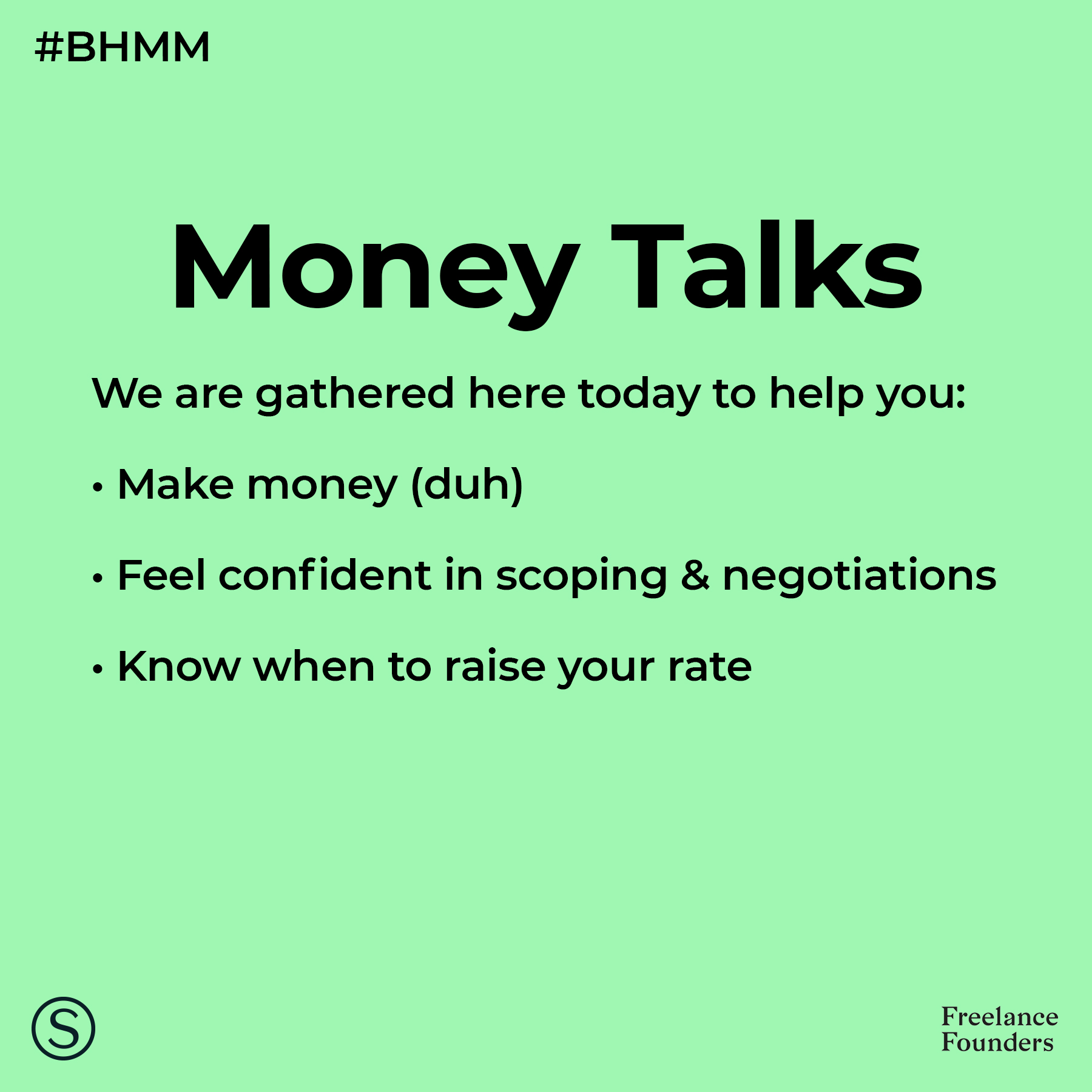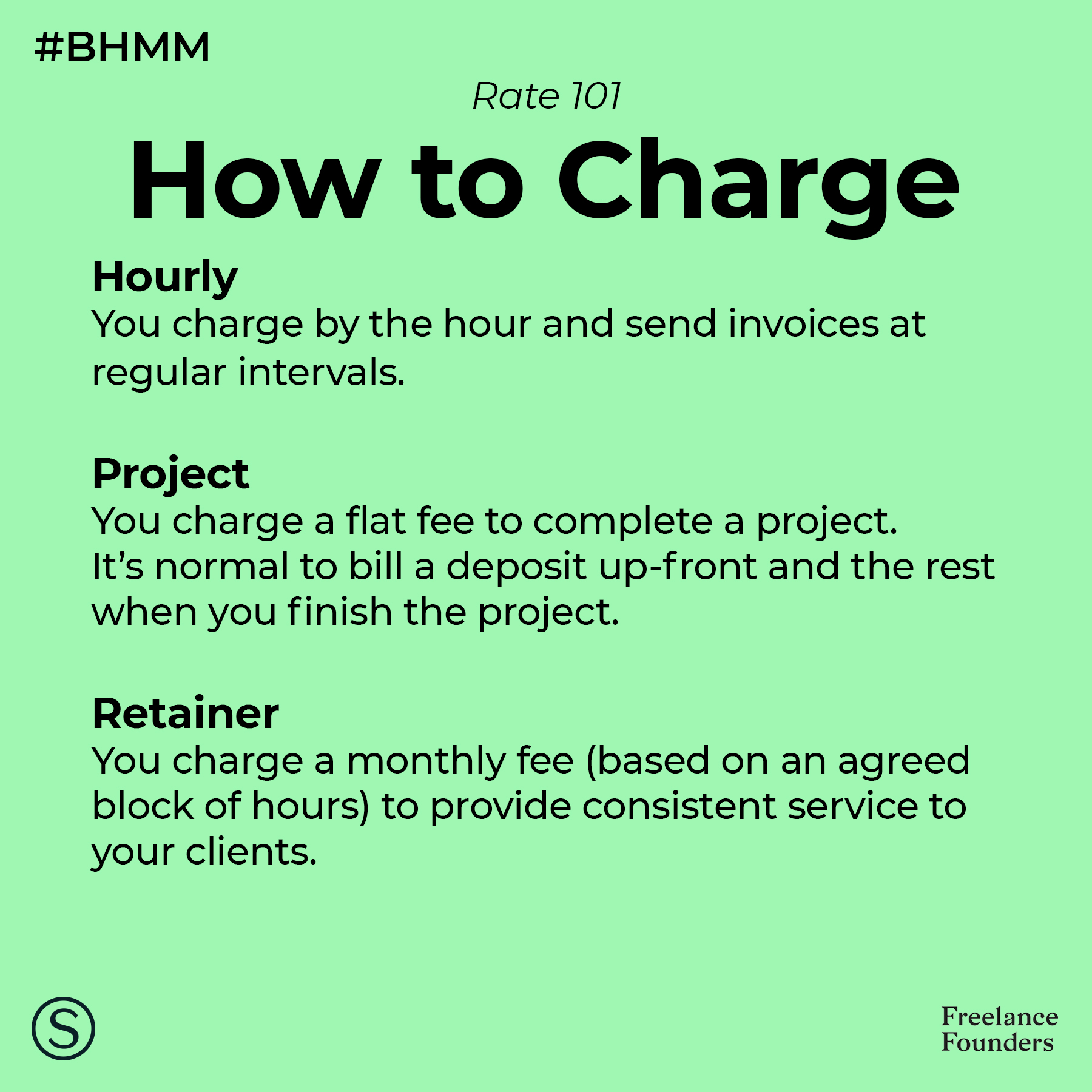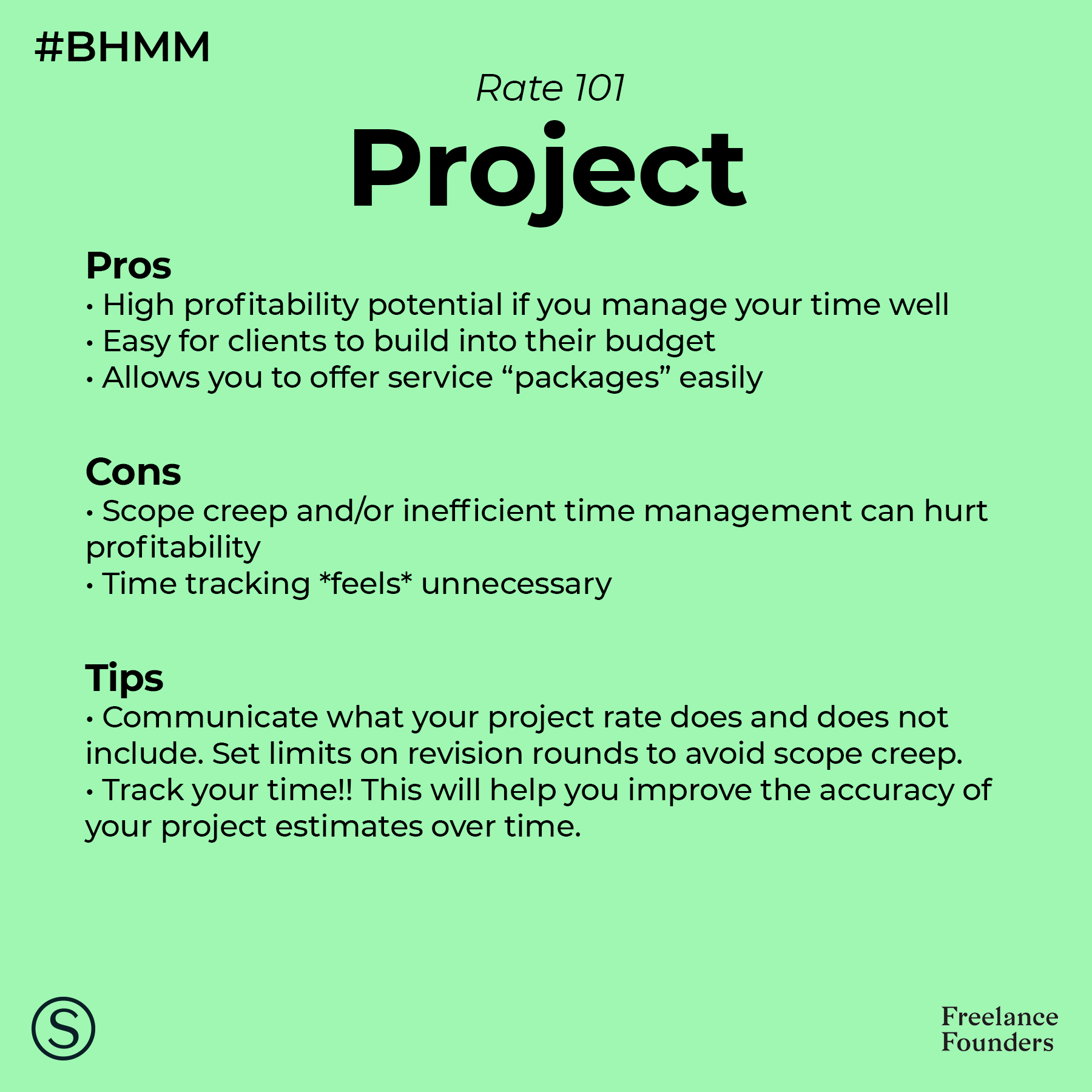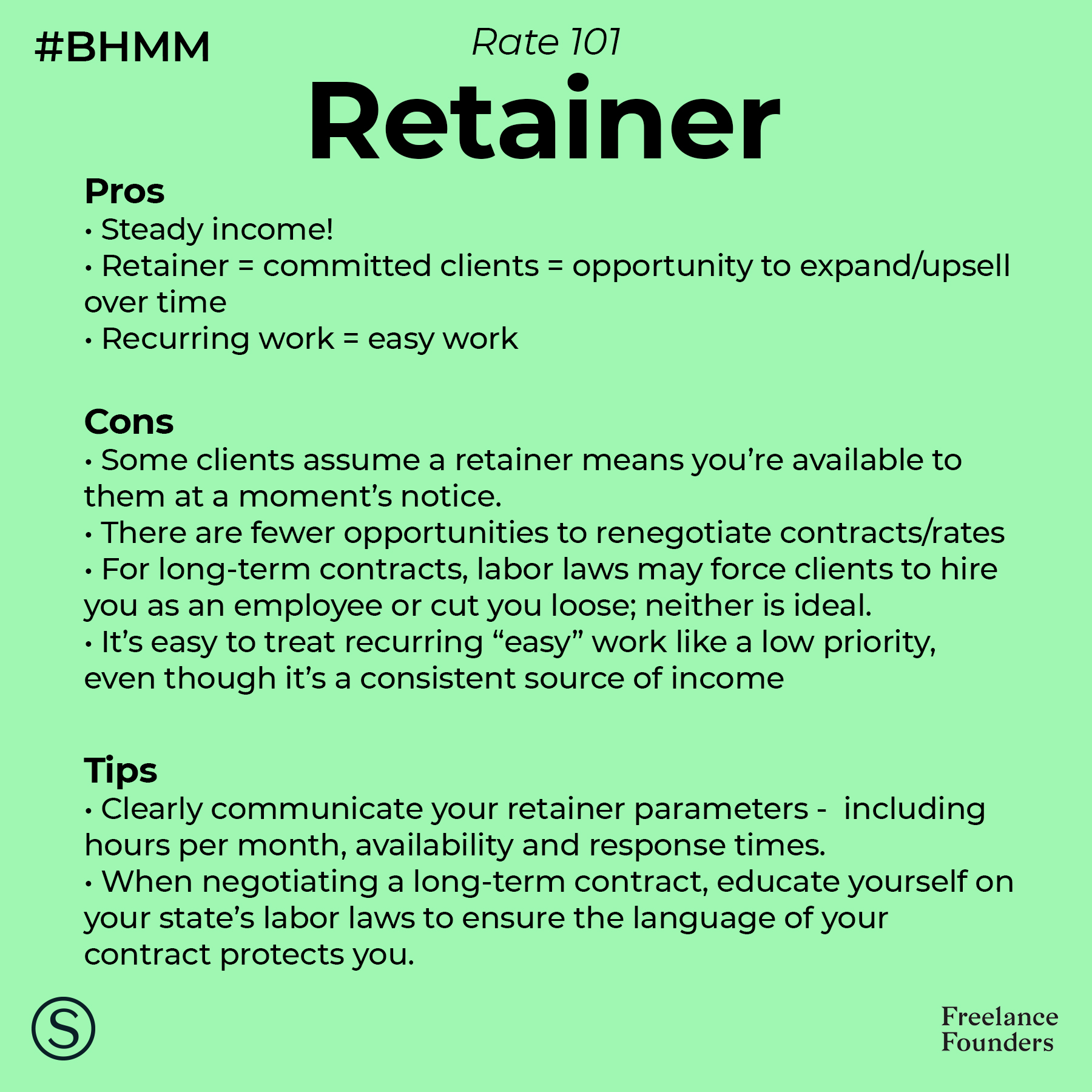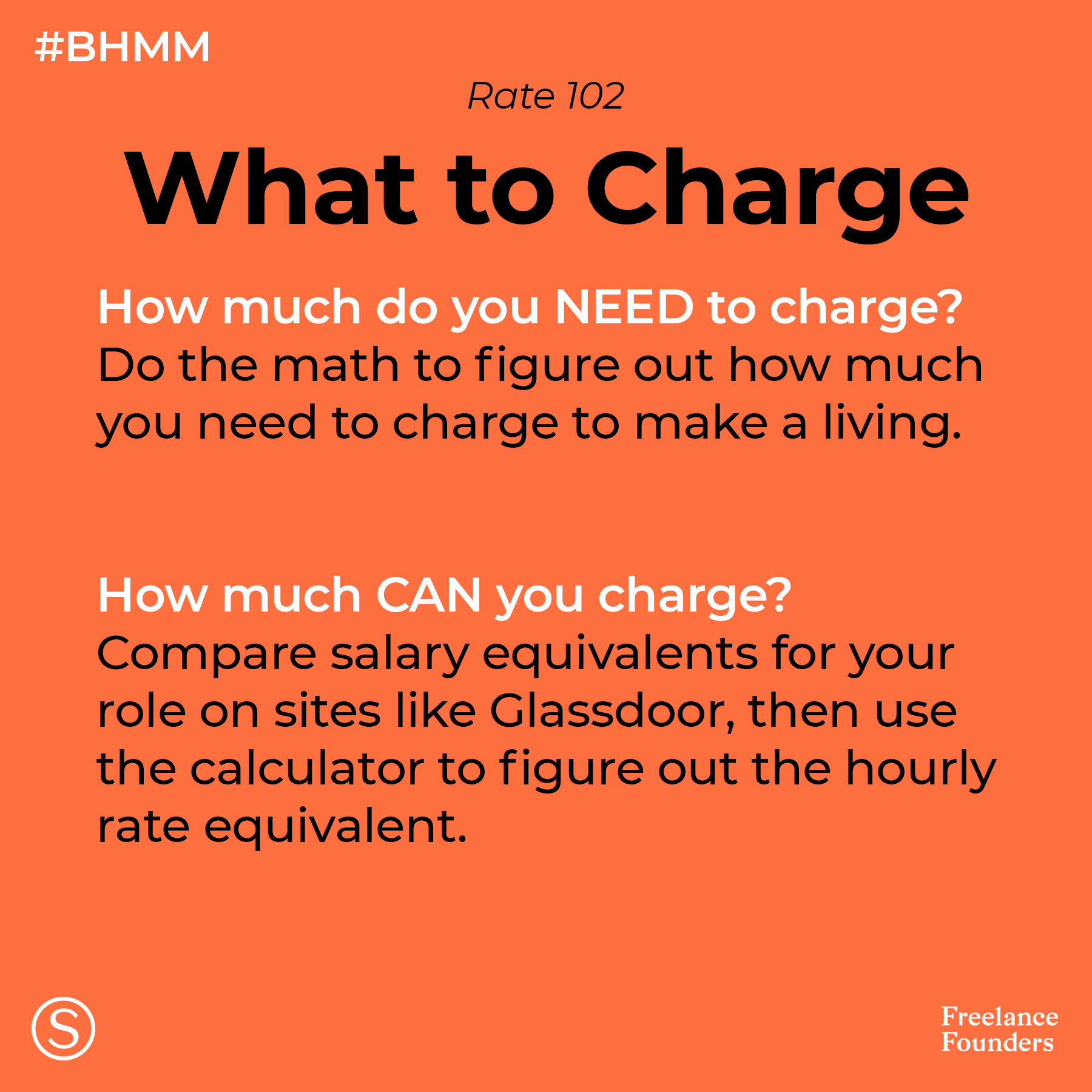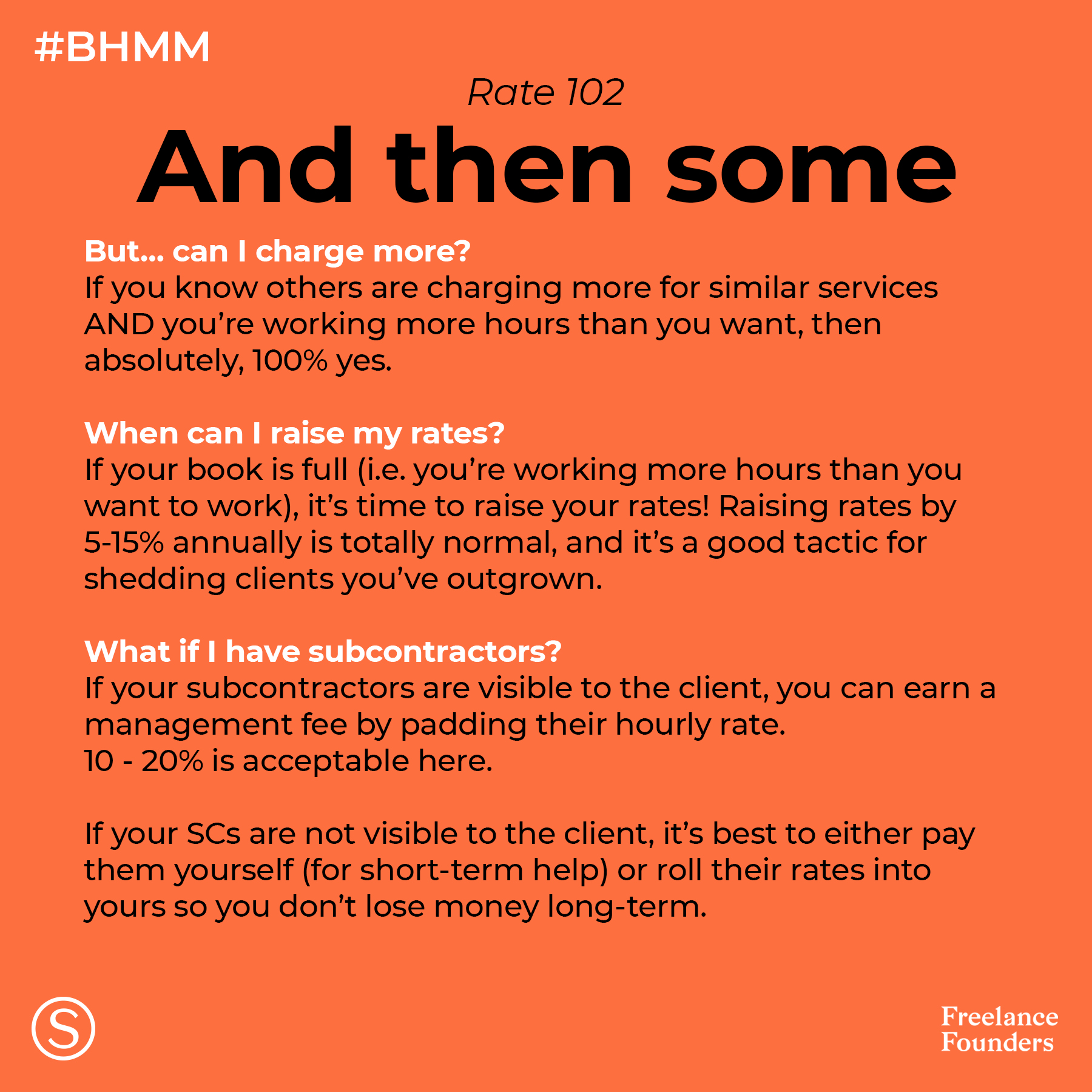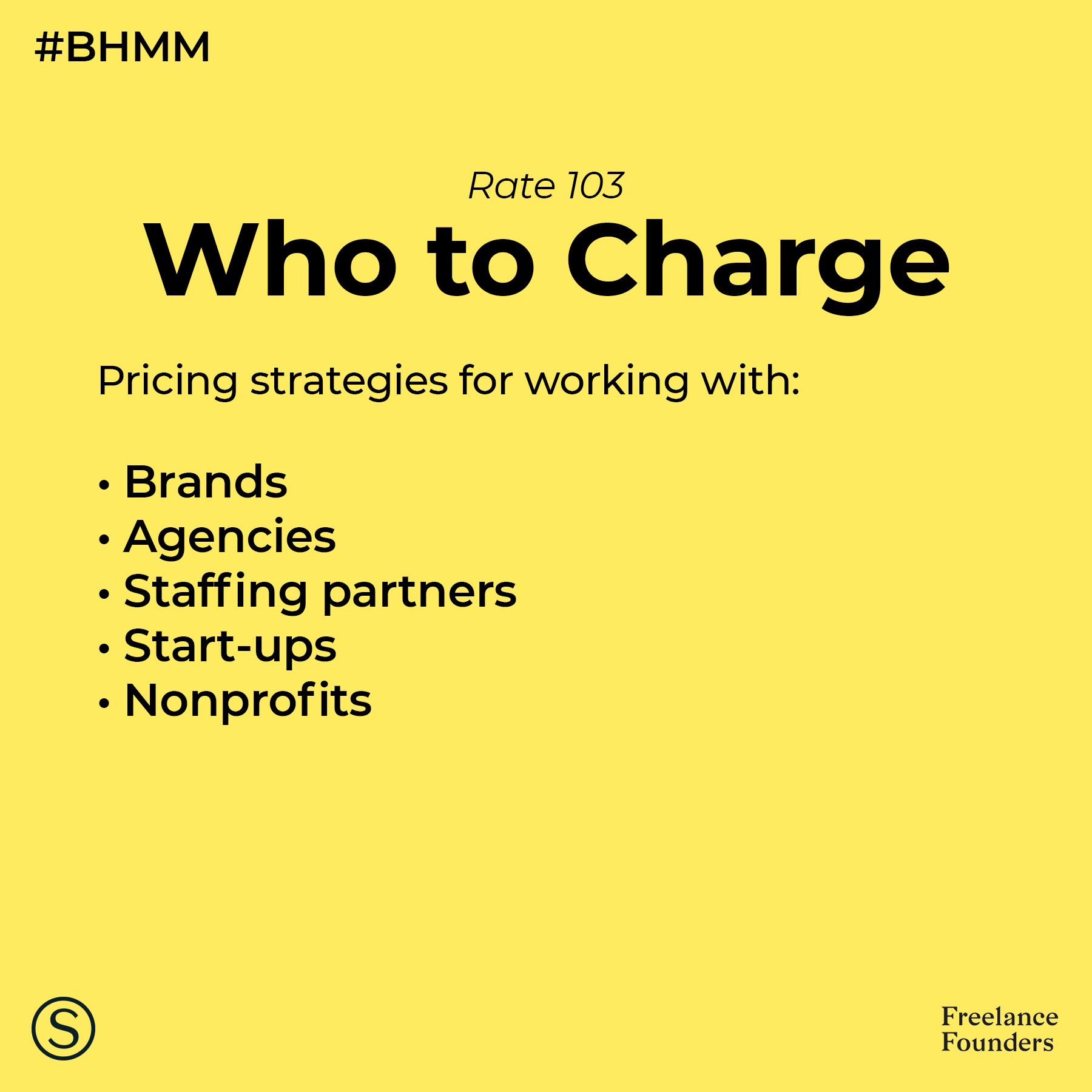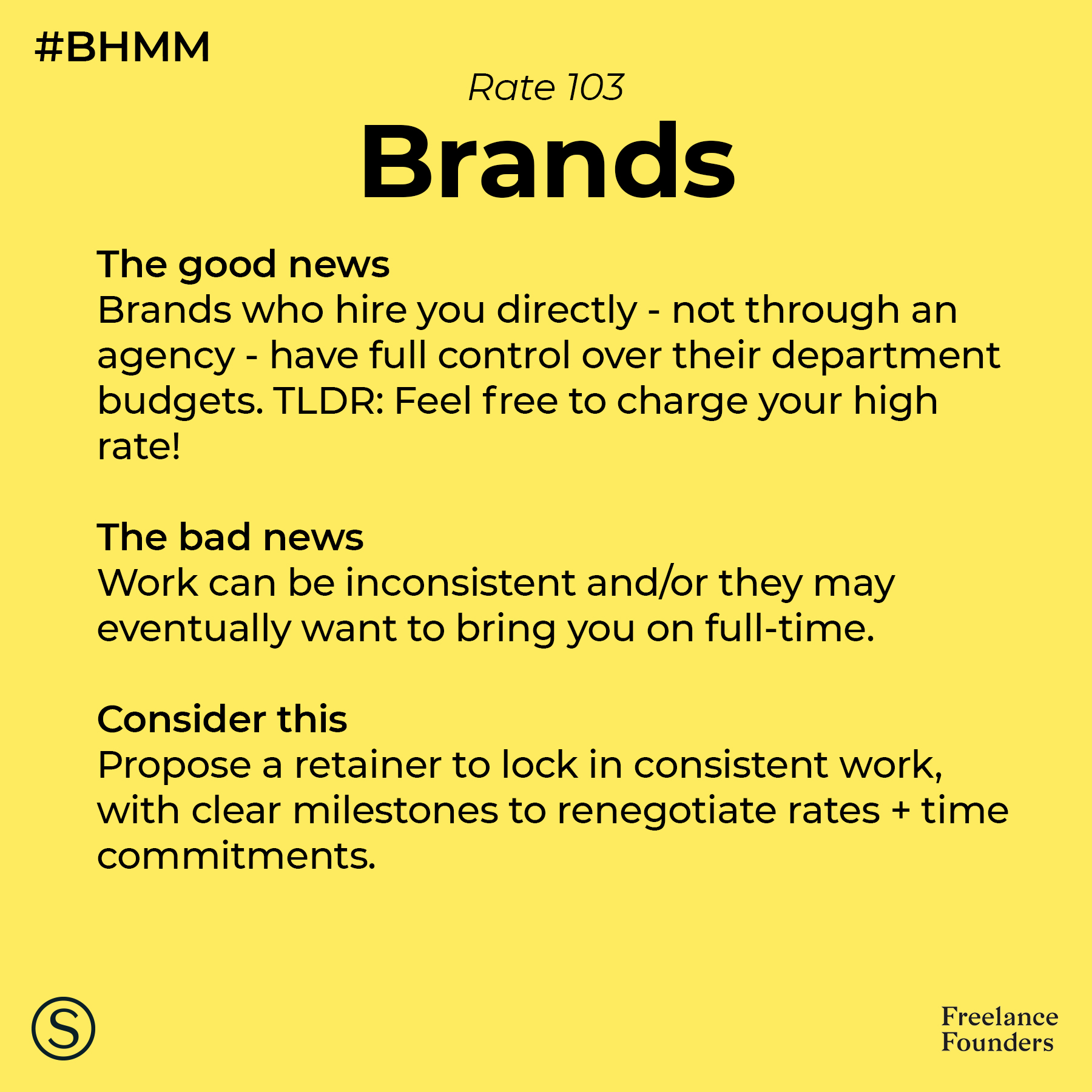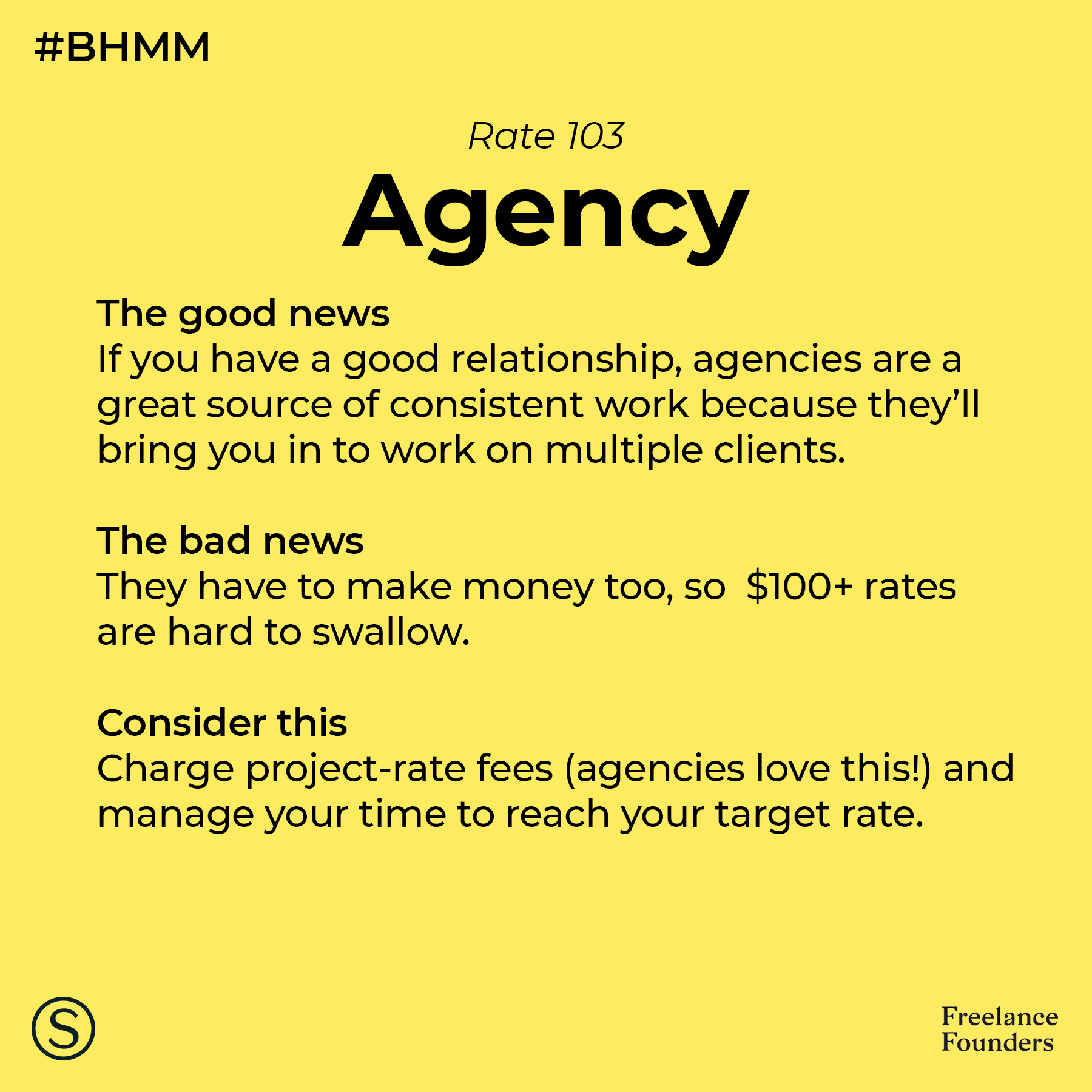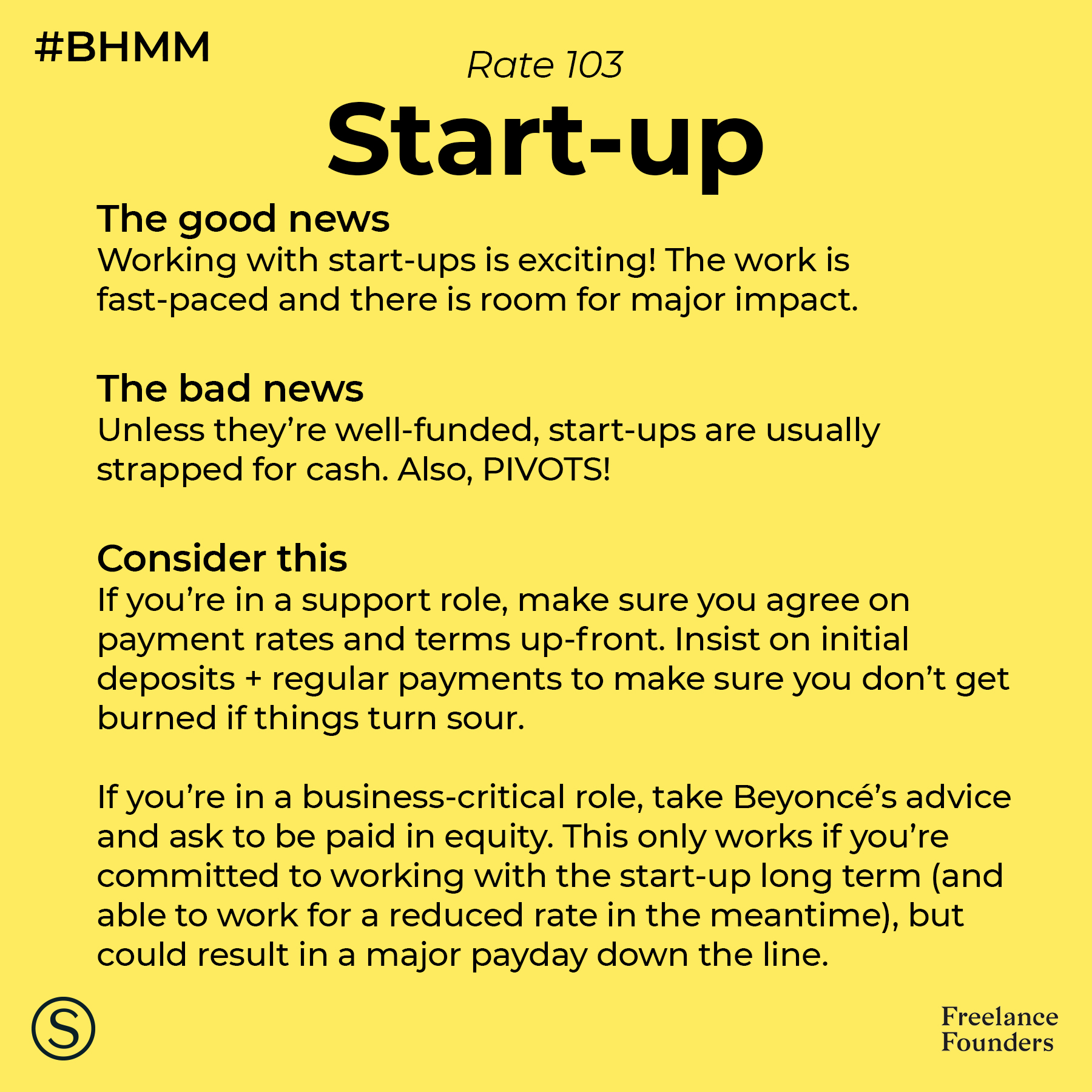Quick show of hands… when’s the last time you raised your rate?
In a traditional 9-5, you have a pretty good idea of what your earning potential is. You can talk to your boss, reference your company’s salary bands, and do research on Glassdoor. For freelancers, figuring out what to charge is one of the most important – and complex – facets of running a successful independent business. This month, we’re sharing inside-track info that will help you life the lifestyle you want while attracting (and keeping!) business from clients you want to work with – let’s get into it!
The first step in getting paid is… talking about getting paid! Our network of vetted freelance experts (most based here in the U.S.!) have worked for all types of clients – from Fortune 100’s to local nonprofits – and we have plenty of client-side experience to draw from to help freelancers understand the most effective pricing strategies for themselves.
Hourly work is the most common pricing structure for most freelancers, and your hourly rate is usually what you use to scope project and retainer work. Clients appreciate hourly rates because they’re straightforward and flexible – work an hour, get paid for an hour. On the downside, hourly work can feel transactional and – when your seniority and experience commands triple-digit rates – can feel overwhelming for smaller clients to afford.
Project rates are a great option for freelancers who are able to effectively manage their time AND for clients who appreciate easy invoicing. Although it can feel unnecessary, it’s critical for freelancers to track their time – regardless of how their billing – to improve their project-based profitability over time!
A retainer isn’t just for your teeth – it’s a pay structure that’s best for ongoing relationships that gives freelancers a steady income stream and clients a steady part-time resource. Most freelancers we work with say that their ideal client mix is to have 1-2 retained clients and some “flex time” in their schedule to take on additional project work.
When you freelance for an agency, it’s important to remember that they have to get paid too. Just like with internal staff, agencies charge a margin on freelance rates to cover the cost of finding, managing and paying freelancers on behalf of their clients. Charging on a project basis (and managing your time to make sure it’s profitable) is the best route to go.
When you work through a staffing company or recruiter, you’re able to benefit from someone else fishing for new clients on your behalf. Most brands that can afford to hire recruiters are usually logos you want in your portfolio, so consider working with staffing companies when you’re looking to build up your résumé.
You either love ‘em or hate ‘em! Many freelancers love working with start-ups because it’s exciting to feel part of something at the very beginning. With that said, there are plenty of horror stories of start-ups going belly-up before they are able to pay their teams. Don’t be afraid to be firm on your billing terms!

Supporting causes you care about is one of the major attractions of freelance work. Although most nonprofits will struggle to pay triple-digit rates, there are creative ways you can make up for lower rates with tax deductions.



